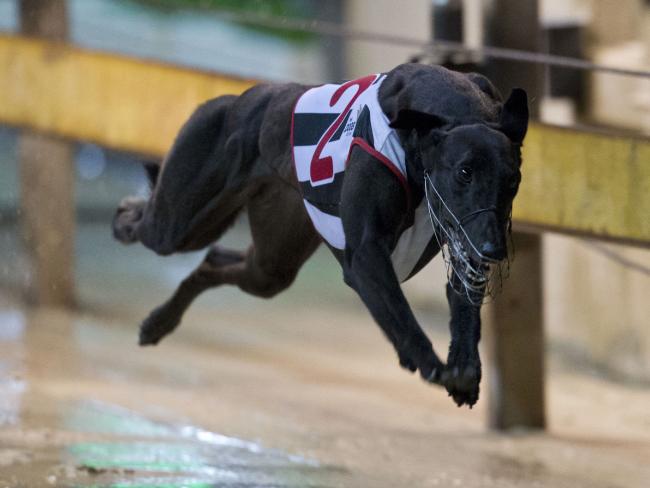by Warren Young, Coalition for the Protection of Greyhounds
Key points:
- Greyhound racing participants are given appearance money as a financial incentive that encourages them to race their dogs as often as possible.
- Dr Alex Brittan, ex-Chief Veterinary Officer, GRNSW called it a “barbaric” practice that increases the risk of injury to greyhounds by over 16 times!
- Pre-race screening by on-track Vets is a joke, as only 30 sec is allowed to assess whether it is safe for each greyhound to race.
- Dr Brittan concluded that if GRNSW is serious about greyhound welfare, they should change these practices as soon as possible.
The NSW government has recently ordered an inquiry into the findings of a report by former Chief Veterinary officer, Greyhound Racing NSW (GRNSW) Dr Alex Brittan. The report revealed the lack of greyhound welfare in the NSW greyhound racing industry, which resulted in the resignation of the GRNSW CEO Rob Macaulay.
Although there are several welfare issues raised in the report, we will focus on over racing, which is an issue CPG have highlighted before. GRNSW provides racing participants with a $60 travel allowance per dog for every race they participate in. The reason for this subsidy is to help make up racing numbers. Dr Brittan noted that many trainers are claiming the allowance for presenting dogs to races that have little chance of winning. Why? Because a trainer can accumulate a large income from the regular appearance money. For example, if a trainer presents 6 greyhounds per race meeting and does this three times in a week, they can claim $1,080 per week. Over a year, they could claim up to $56,000 tax free!
Obviously, the travel allowance is providing an incentive to participants to race their dogs as often as possible, leading to over racing. Some racing jurisdictions in Australia have a maximum racing frequency of every 4 days, but in NSW, the maximum frequency is every two days, which Dr Brittan described as “barbaric”. Racing too frequently doesn’t allow a greyhound to fully recover, so they will take fatigue into successive races, causing an increased injury risk. Dr Brittan stated that the travel allowance increased the incidence of on-track injuries by 16 times, and this produced the greatest increase in injury rate in the history of NSW greyhound racing. Dr Brittan stated that if GRNSW is serious about putting greyhound welfare first, they need to remove this travel allowance.
NSW racing minister David Harris said he wanted to ensure the industry had “the highest standards of animal welfare and integrity”. This sounds like rhetoric because research evidence from New Zealand has been completely ignored by the industry. It showed that greyhounds raced more than once per week had 39% more soft tissue injuries compared to dogs raced once per week.
Pre-race screening
As well as fatigue, a greyhound could be carrying an injury, which further increases the risk of a more serious injury. Currently, GRNSW employs an on-track Vet to examine all dogs before they race. This is intended to screen the dogs to determine if they are fit to race. Since only one Vet is required to examine all dogs in a race meeting, Dr Brittan stated that the Vet has about 30 seconds per dog to conduct the examination, which does “next to nothing” to prevent an injured dog from being allowed to race.
To make a meaningful difference, the report recommended that Vets be provided with a pressure plate machine, which can more accurately and quickly screen dogs for abnormalities prior to racing. The price tag for such a machine is estimated at $70-80K, so a large investment would be required from the industry to address this problem. The NSW Greyhound Welfare & Integrity Commission (GWIC) has refused to adopt this recommendation, and stated that it’s the responsibility of participants to ensure their dogs are fit to race. Without any specialised qualifications or use of technology, it’s clear that a trainer could not do this!
So far, GRNSW has rejected the findings and recommendations from the report that they commissioned, revealing their defensive, “damage-control” attitude is more about self-preservation than greyhound welfare. The enquiry following from the Brittan report is due in mid-December, so it will be interesting to see if anything changes.
NSW Premier Chris Minns stated that greyhound racing would not be banned, regardless of the outcomes of the enquiry. His preference is to strengthen the regulations relating to greyhound welfare, a response typical of all Australian state governments. Genuine reforms for the benefit of greyhounds invariably costs a significant investment of funds from taxpayers and gambling sources, which reinforces just how unsustainable greyhound racing is.
A final thought
Western Australian (WA) greyhound advocacy group Free the Hounds recently provided some statistics showing the warped priorities of the WA industry, and most likely reflects the situation in NSW.
The following data is based on a 6-month period during 2024, and only relates to WA, which is a smaller industry compared to NSW.
The participant subsidy was $1,270,410 and prize money was $9,864,232, with only $97,396 spent on greyhound welfare. That amount spent on welfare represents less than 1% of the prize and subsidy money!


